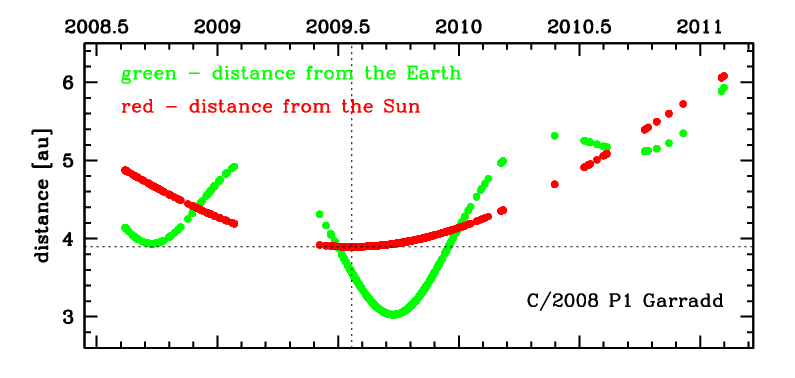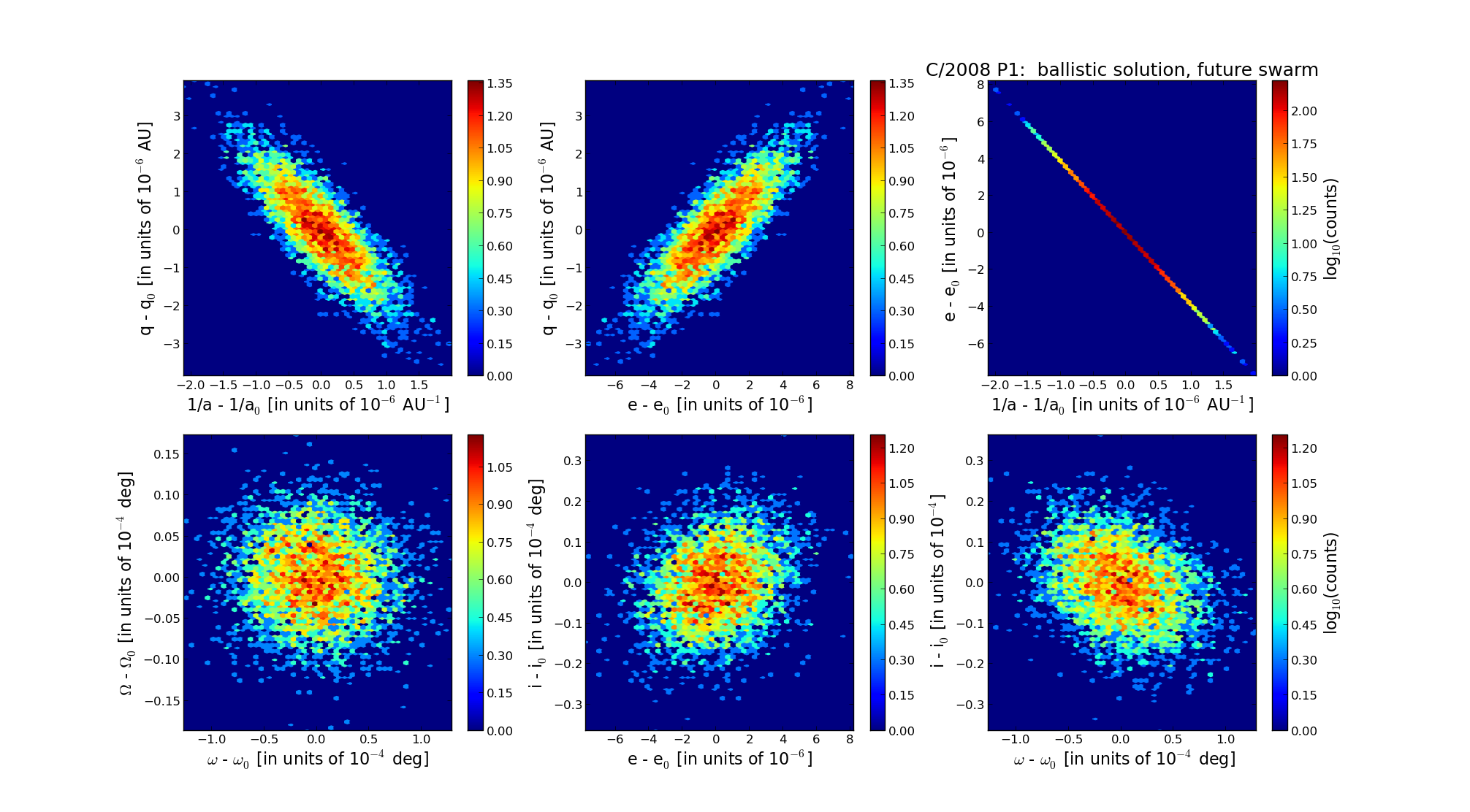C/2008 P1 Garradd
more info
C/2008 P1 was discovered by Gordon J. Garradd on 13 August 2008 on images taken with the 0.5-m Uppsala Schmidt telescope at Siding Spring; its cometary apperance was next confirmed by C. Jacques and E. Pimentel (Belo Horizonte, Minas Gerais, Brazil, 0.30-m reflector) [IAUC 8965, 2008 August 15].
This comet made its closest approach to the Earth on 22 September 2009 (3.028 au), two months after perihelion passage.
Solution given here is based on data spanning over 2.5 yr in a range of heliocentric distances: 4.88 au – 3.896 au (perihelion) – 6.08 au.
This comet suffers small planetary perturbations during its passage through the planetary system that lead to a more tight future orbit (see future barycentric orbit).
See also Królikowska 2014 and Królikowska and Dybczyński 2017.
This comet made its closest approach to the Earth on 22 September 2009 (3.028 au), two months after perihelion passage.
Solution given here is based on data spanning over 2.5 yr in a range of heliocentric distances: 4.88 au – 3.896 au (perihelion) – 6.08 au.
This comet suffers small planetary perturbations during its passage through the planetary system that lead to a more tight future orbit (see future barycentric orbit).
See also Królikowska 2014 and Królikowska and Dybczyński 2017.
| solution description | ||
|---|---|---|
| number of observations | 1373 | |
| data interval | 2008 08 13 – 2011 02 04 | |
| data type | perihelion within the observation arc (FULL) | |
| data arc selection | entire data set (STD) | |
| range of heliocentric distances | 4.88 au – 3.90 au (perihelion) – 6.08 au | |
| detectability of NG effects in the comet's motion | NG effects not determinable | |
| type of model of motion | GR - gravitational orbit | |
| data weighting | YES | |
| number of residuals | 415 | |
| RMS [arcseconds] | 0.61 | |
| orbit quality class | 1a+ | |
| orbital elements (barycentric ecliptic J2000) | ||
|---|---|---|
| Epoch | 2315 07 25 | |
| perihelion date | 2009 07 22.38646200 | ± 0.00023900 |
| perihelion distance [au] | 3.89265287 | ± 0.00000102 |
| eccentricity | 0.99906391 | ± 0.00000214 |
| argument of perihelion [°] | 11.780623 | ± 0.000039 |
| ascending node [°] | 357.715831 | ± 0.000005 |
| inclination [°] | 64.320996 | ± 0.000009 |
| reciprocal semi-major axis [10-6 au-1] | 240.48 | ± 0.55 |
| file containing 5001 VCs swarm |
|---|
| 2008p1a5.bpl |

